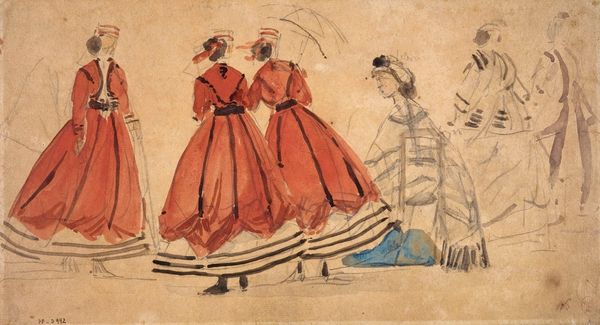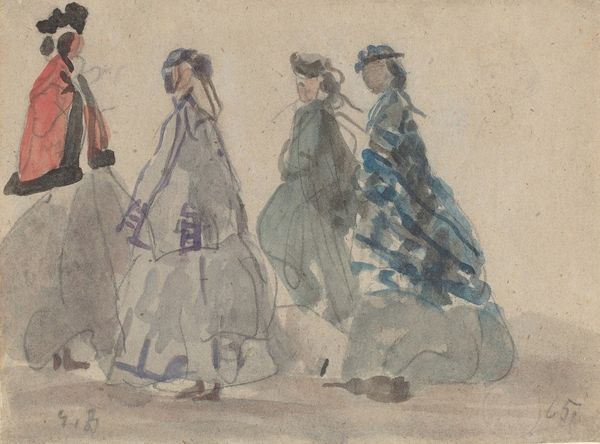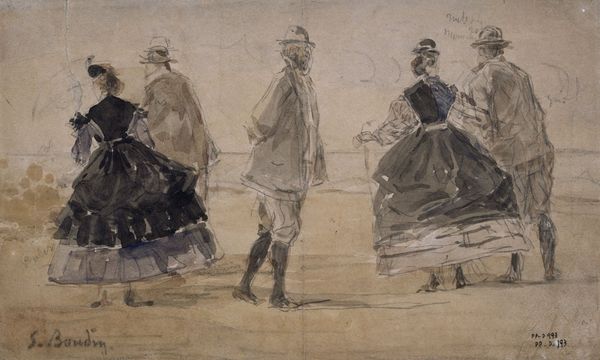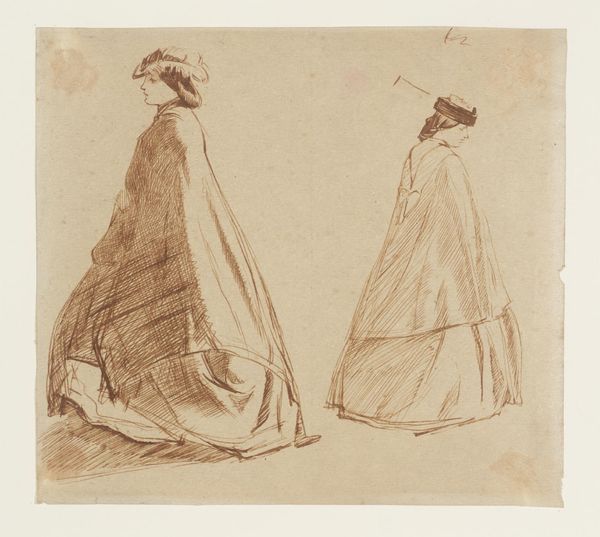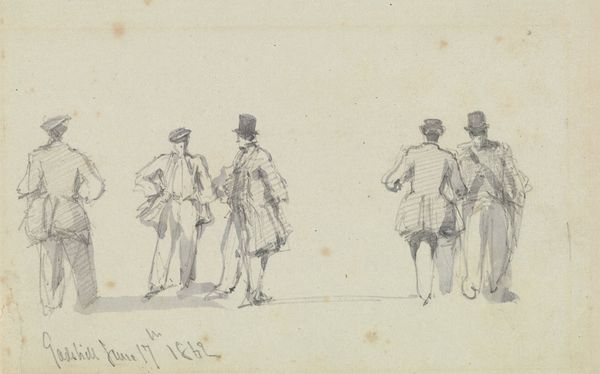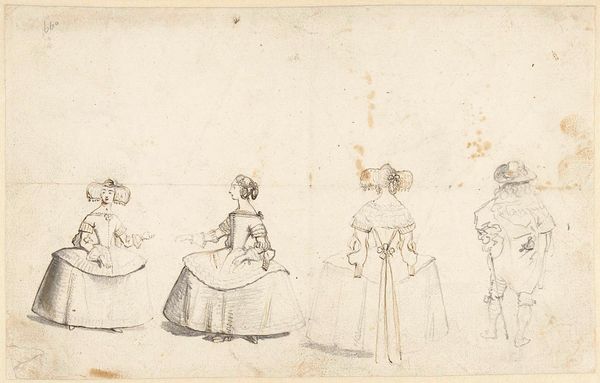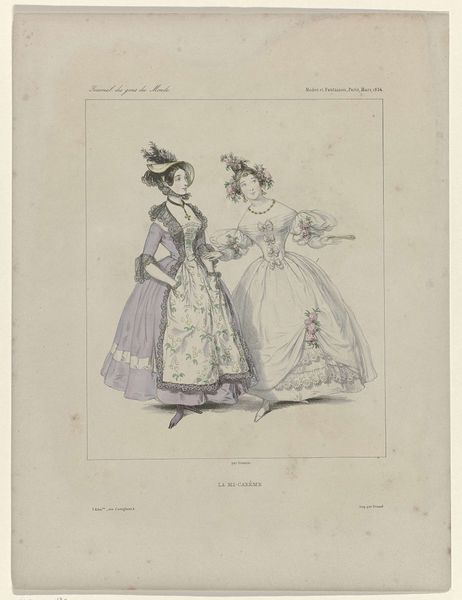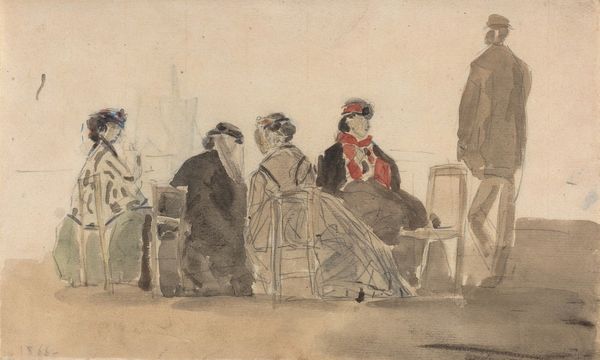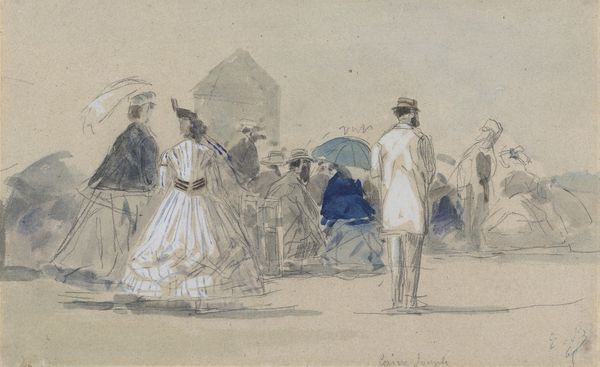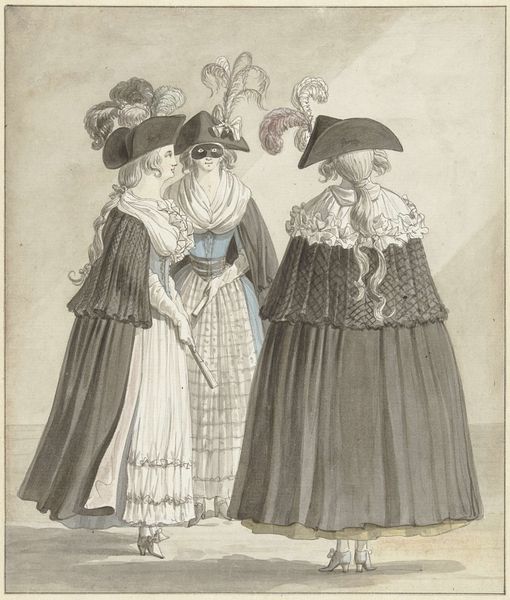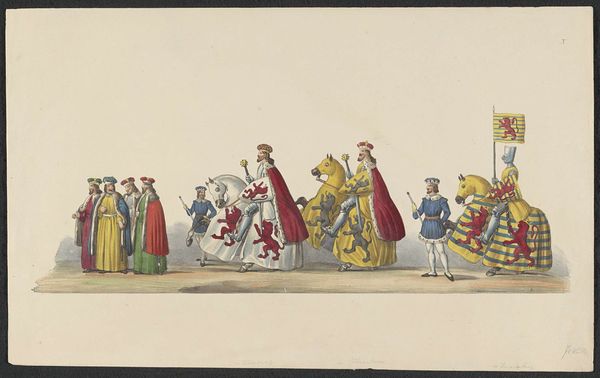
drawing, plein-air, watercolor
#
portrait
#
drawing
#
impressionism
#
plein-air
#
landscape
#
oil painting
#
watercolor
#
watercolour illustration
#
genre-painting
#
watercolor
Copyright: Public Domain: Artvee
Curator: Eugène Boudin's watercolor, "Three Women at Trouville," painted circa 1865, depicts a fleeting moment of leisure. What catches your eye first about this piece? Editor: It’s the red jacket, undeniably. That single burst of color amid the otherwise muted tones. It makes me think about codes of visibility and how women navigated public spaces then. Curator: Boudin was instrumental in the Impressionist movement. He emphasized painting outdoors, en plein air, which is quite apparent in the work's airy feel. He was really trying to capture the atmospheric conditions, the light of that specific moment. How does that impact its social reading for you? Editor: It is interesting, as I see this work and think of the limitations for women, but also of the agency of walking. It makes me wonder what the relationship to landscape was. Who got to see what? The flaneur, who often took the form of the privileged and leisured white male, could watch but may be limited by social expectation when it comes to interacting with the subjects he sees. I feel an immediate curiosity about their identities, what leisure and tourism mean for them, and how their class or social standing impacts those meanings. Curator: These were newly wealthy bourgeois women who could afford seaside leisure, which highlights class mobility of the era. Boudin had commercial relationships in that class, teaching young women in bourgeoisie how to paint. It was a growing social phenomenon, this expansion of consumer culture and access. Do you sense any resistance within the painting? Editor: Perhaps the speed of the brushstrokes conveys an intentional lack of detail. This may echo resistance towards fixed categorization and reflect social ambiguities surrounding these women as figures of an increasingly shifting landscape. It speaks of transience. Curator: Transience, definitely. These seaside paintings served a rising tourist market, providing those who sought it an opportunity to capture and preserve moments, a visualization of their access to leisure and comfort. Editor: It really is a remarkable glimpse, isn’t it? Into a world transforming before Boudin’s very eyes, and ours. Curator: Indeed, offering us insight into art’s interaction with emergent economies and social roles.
Comments
No comments
Be the first to comment and join the conversation on the ultimate creative platform.
